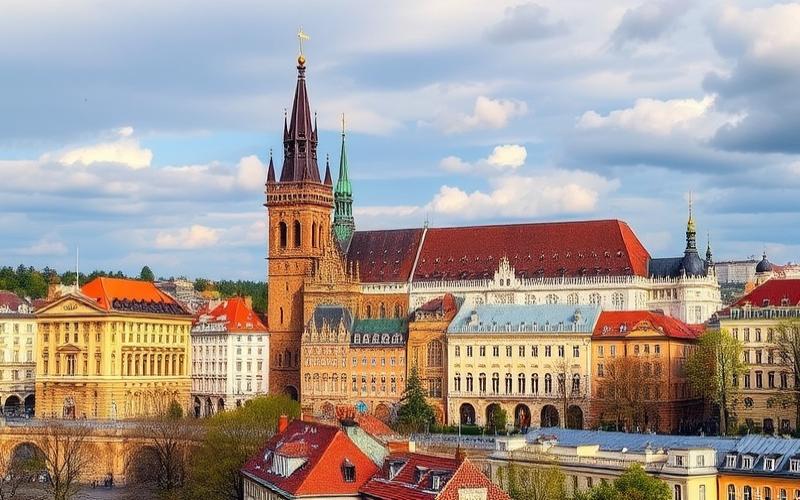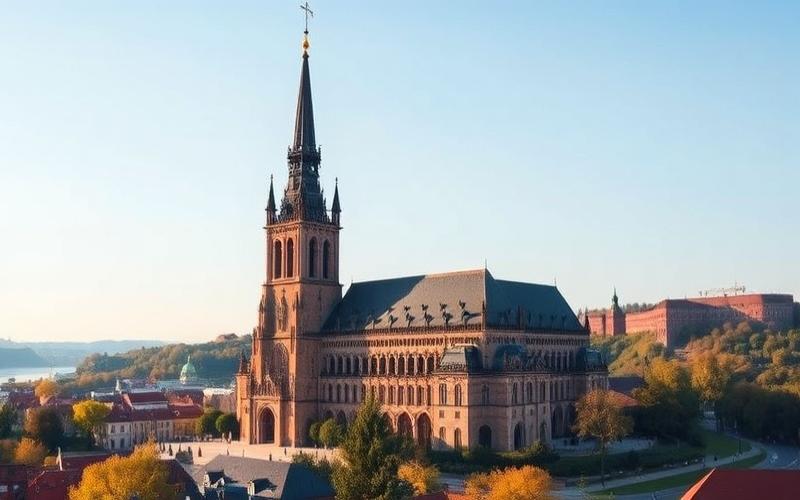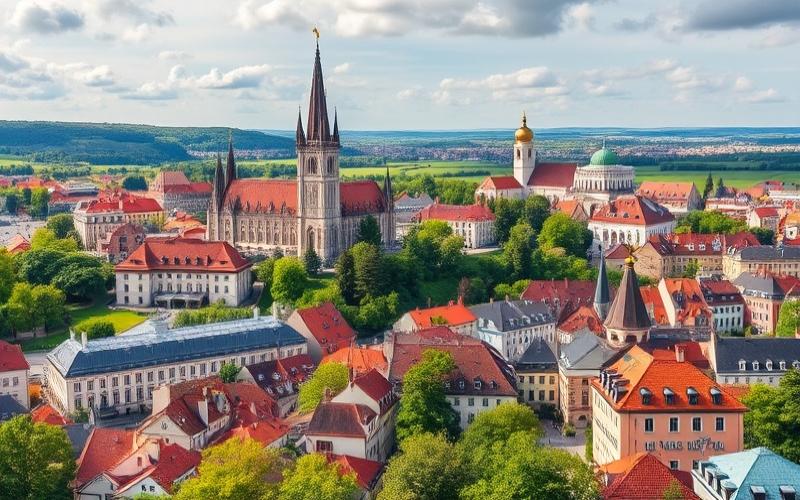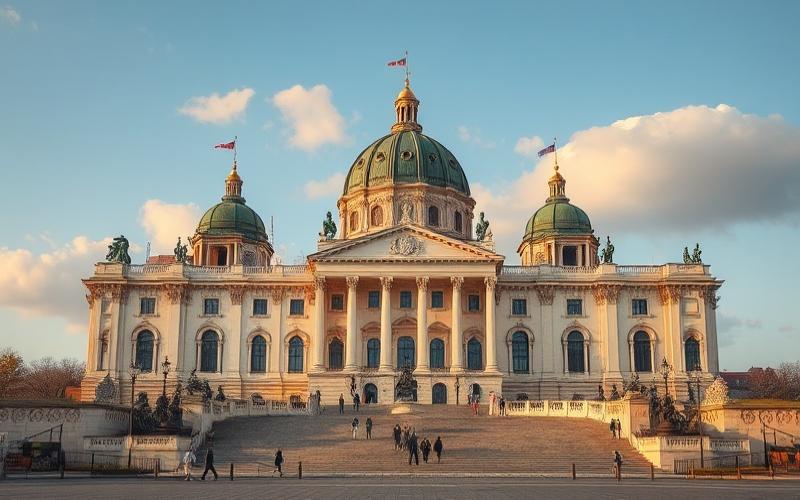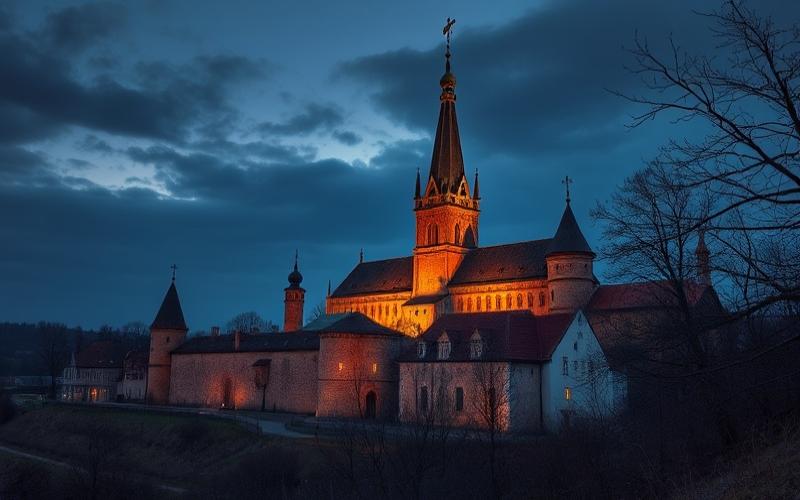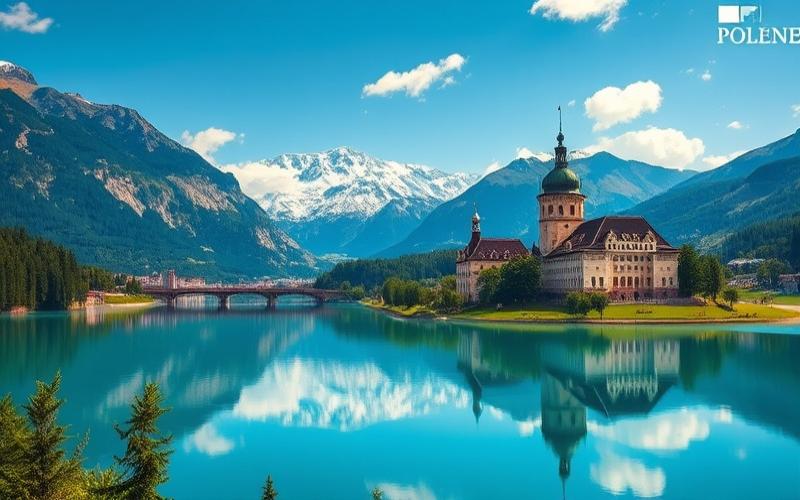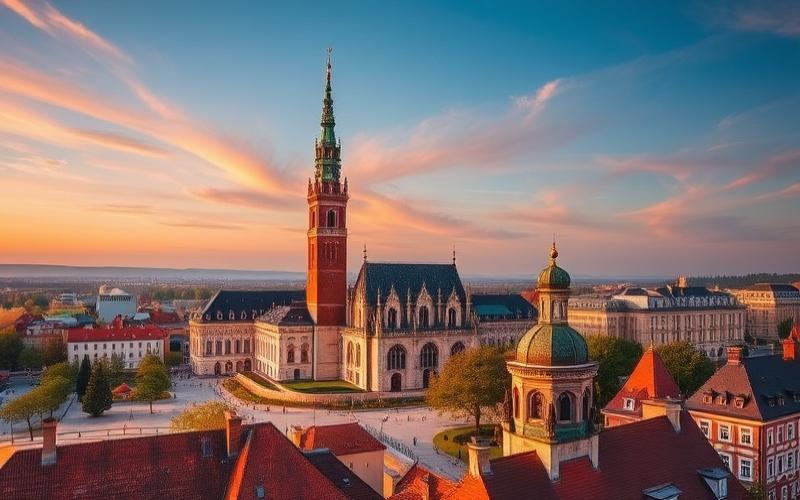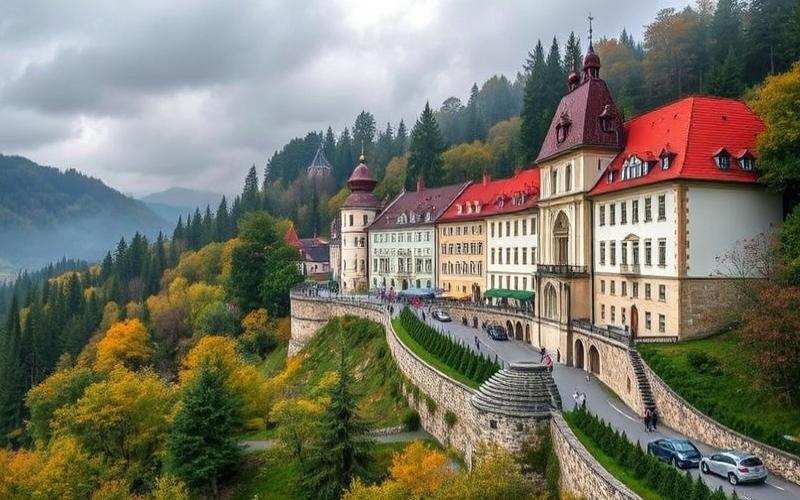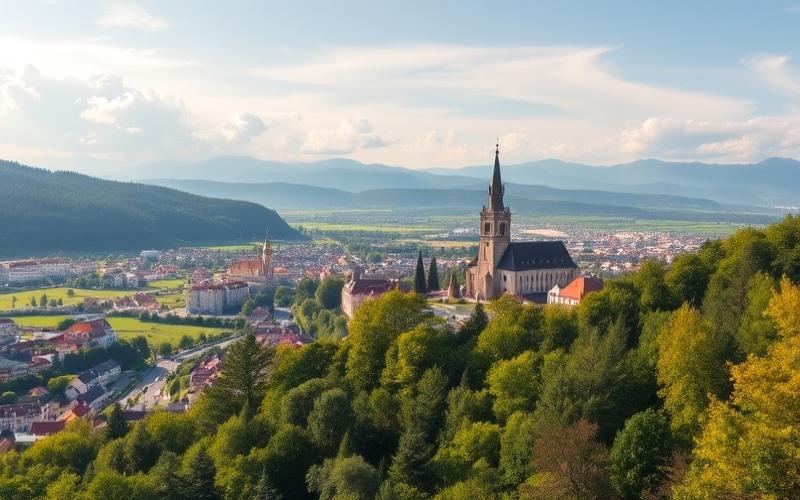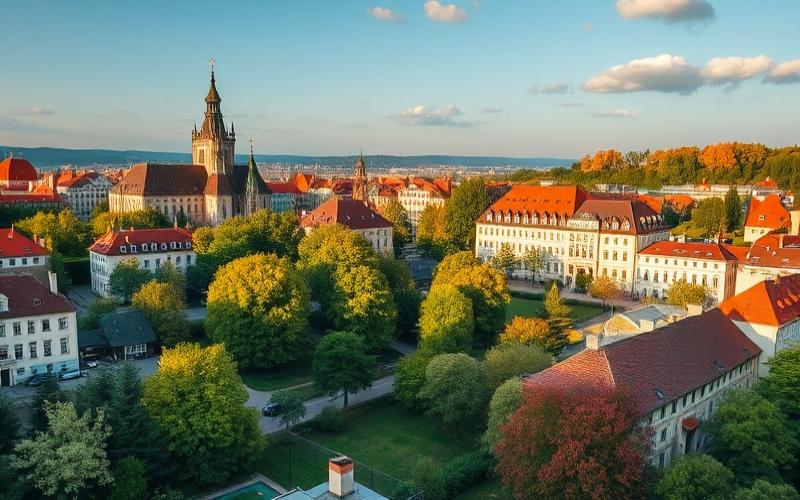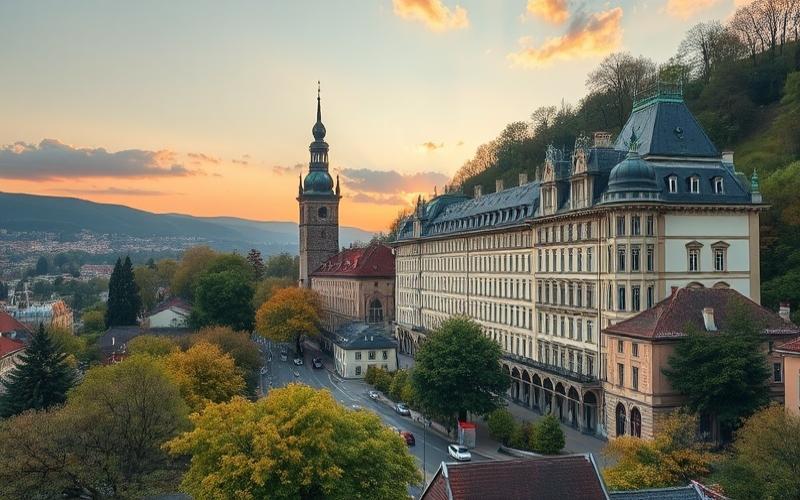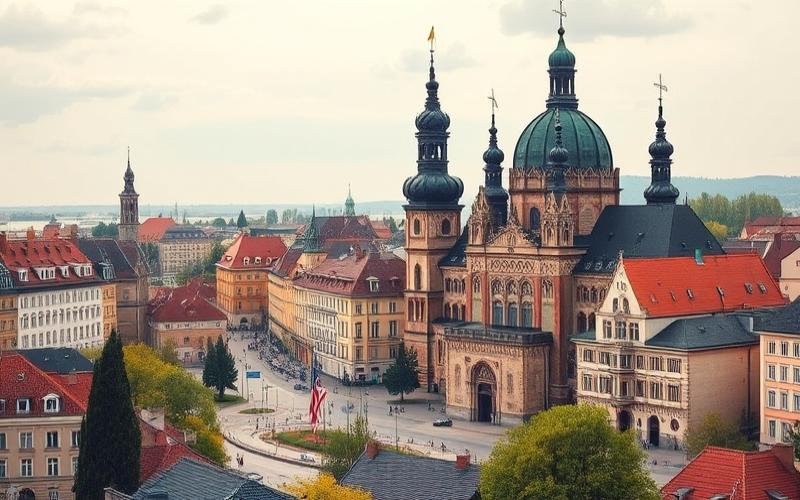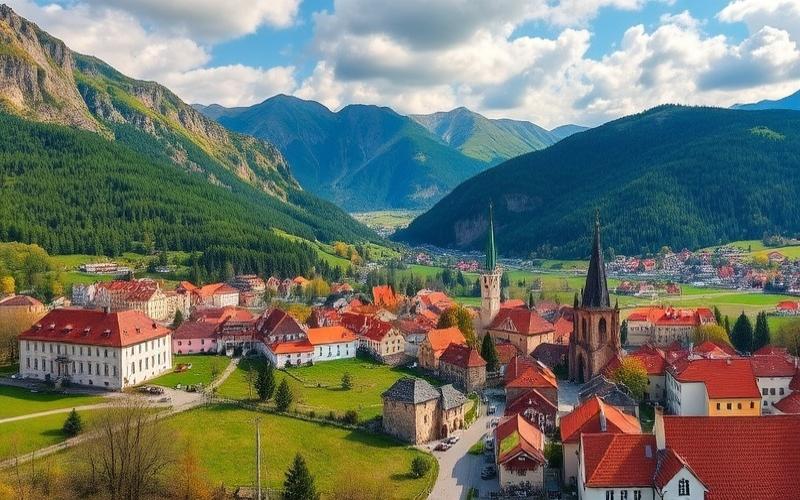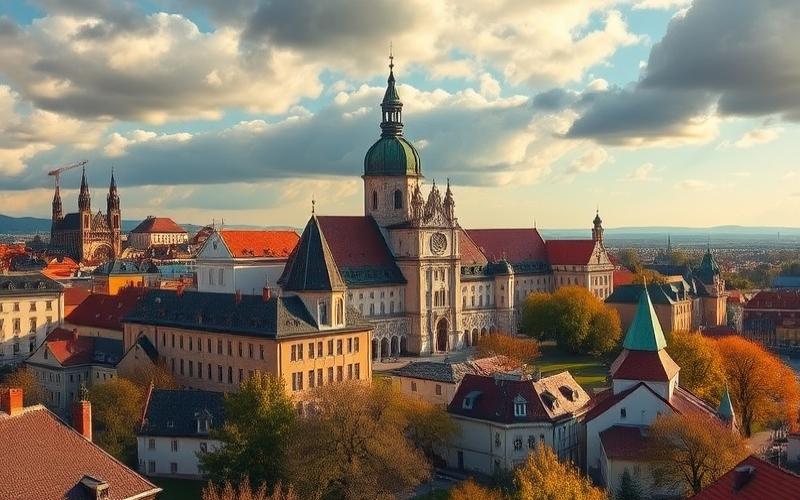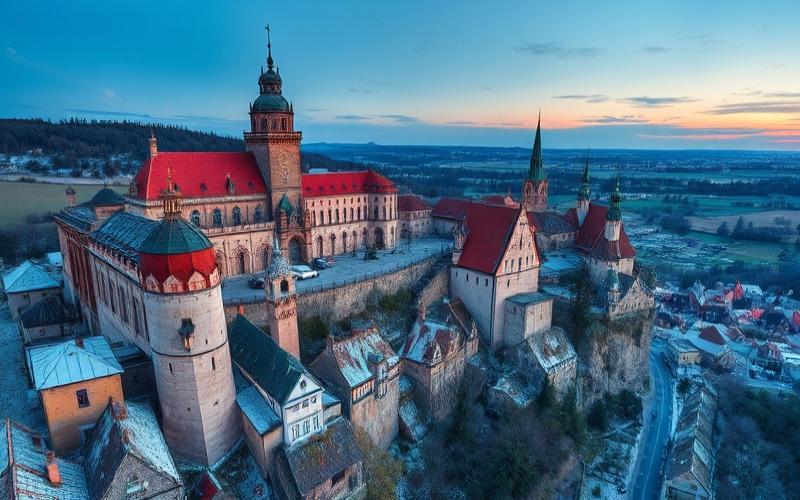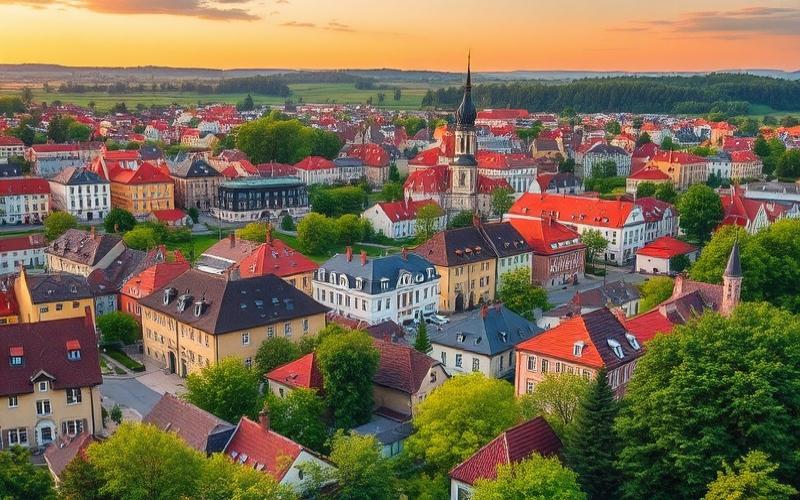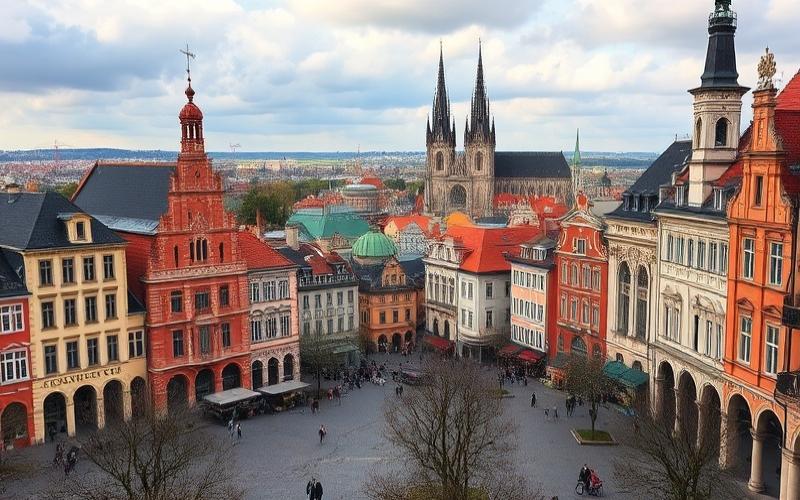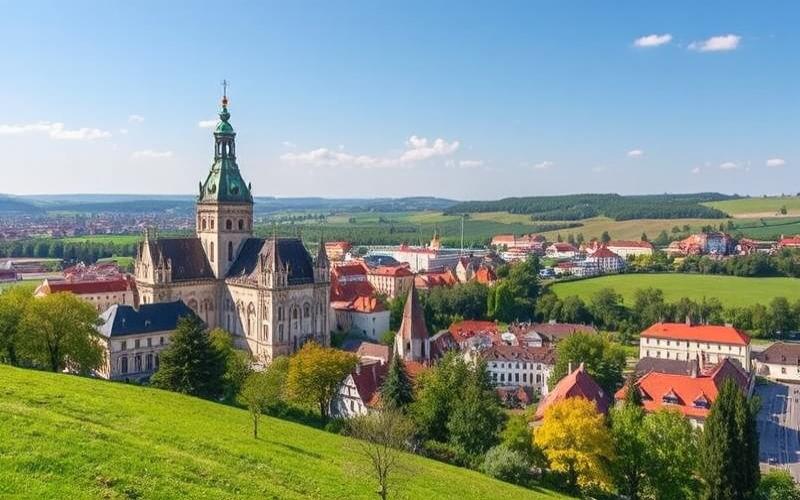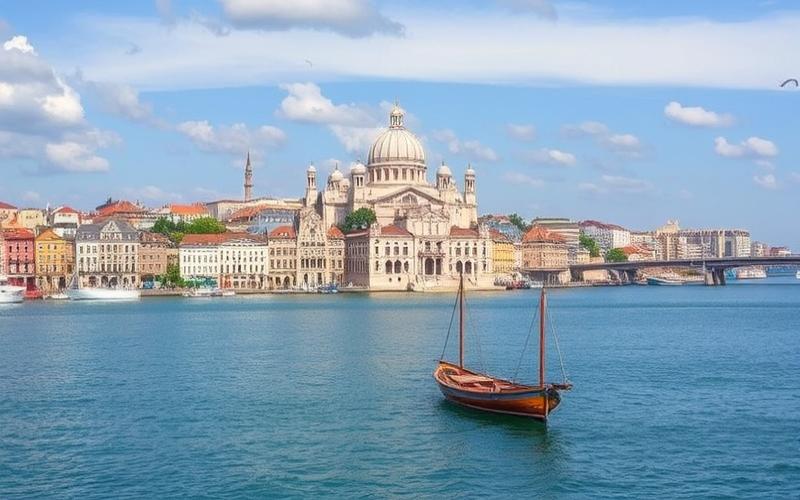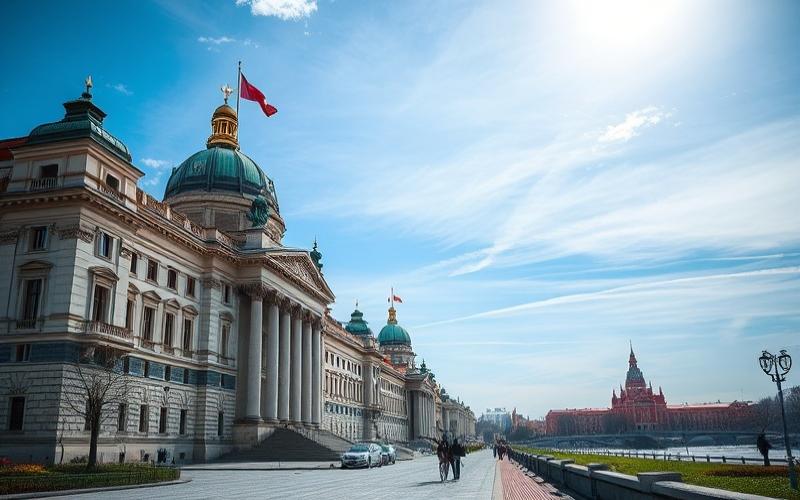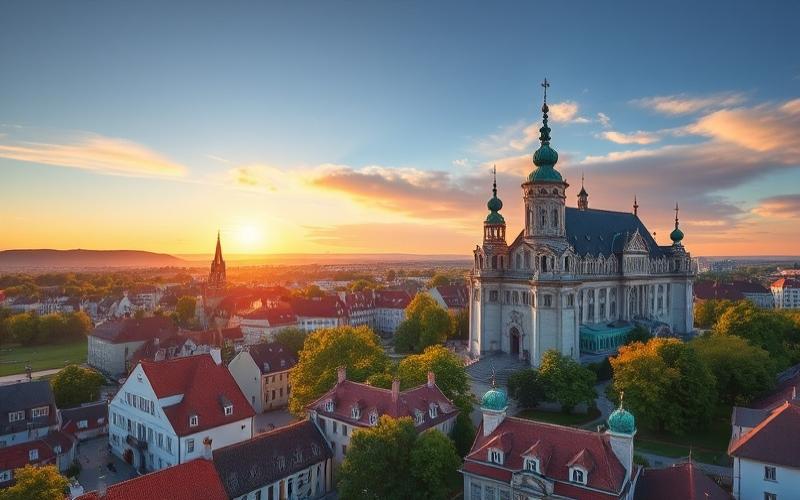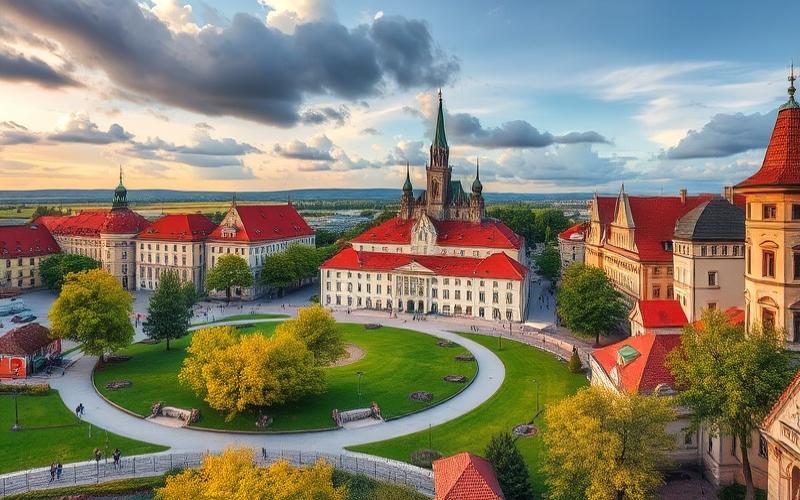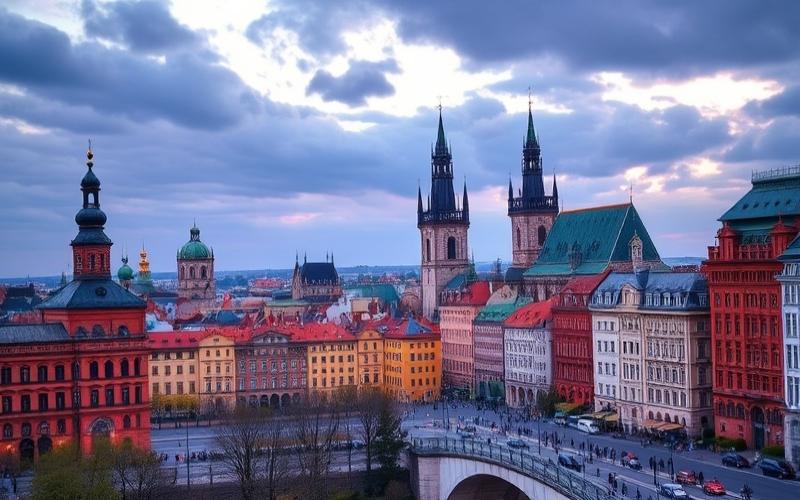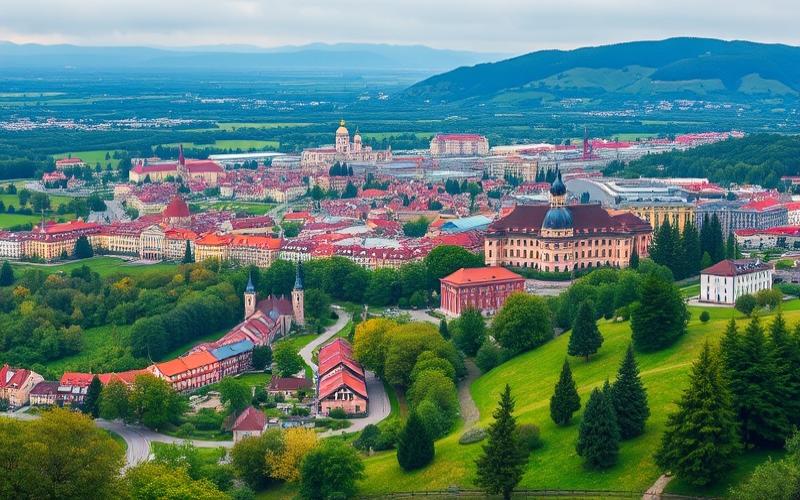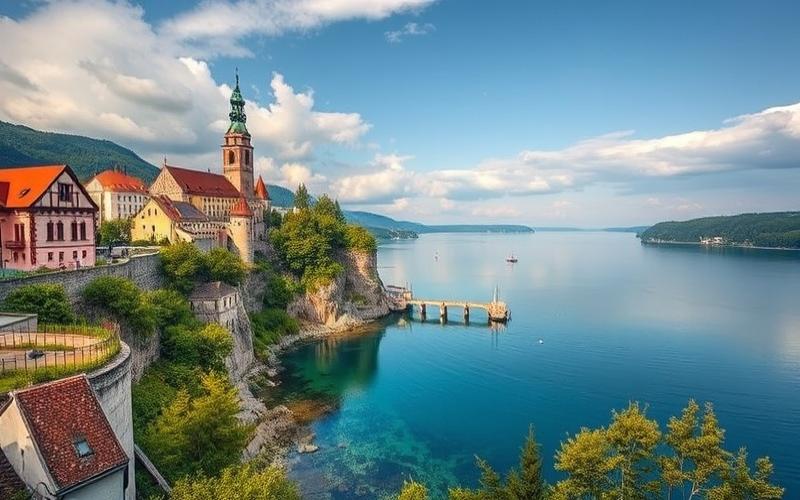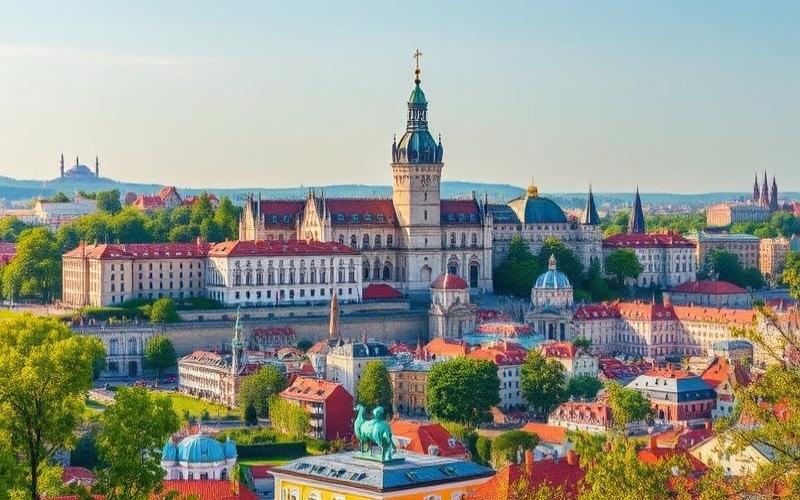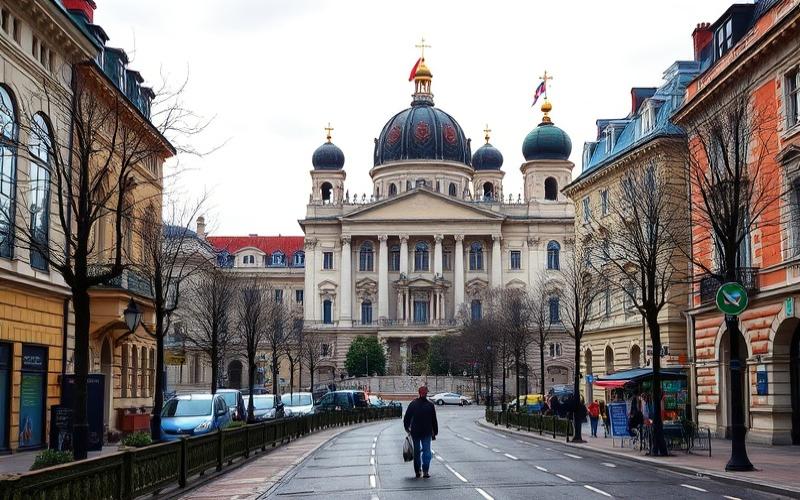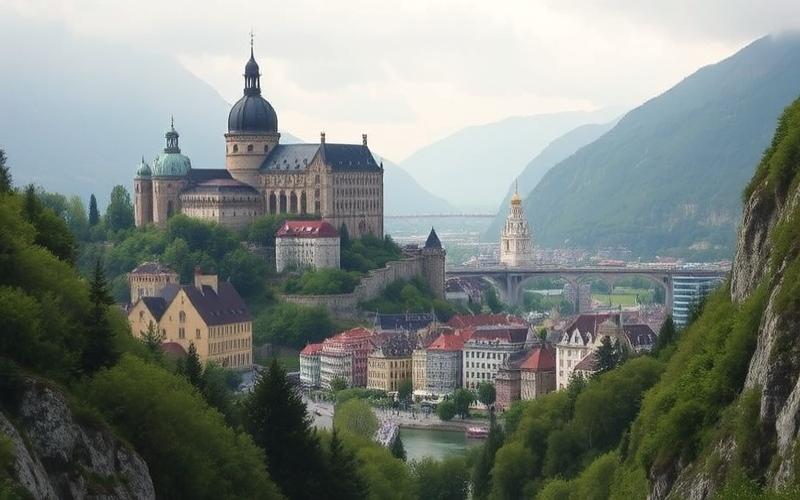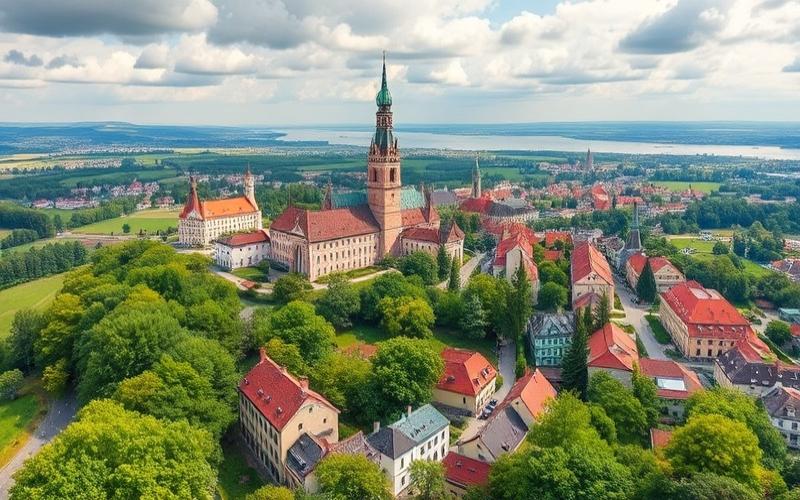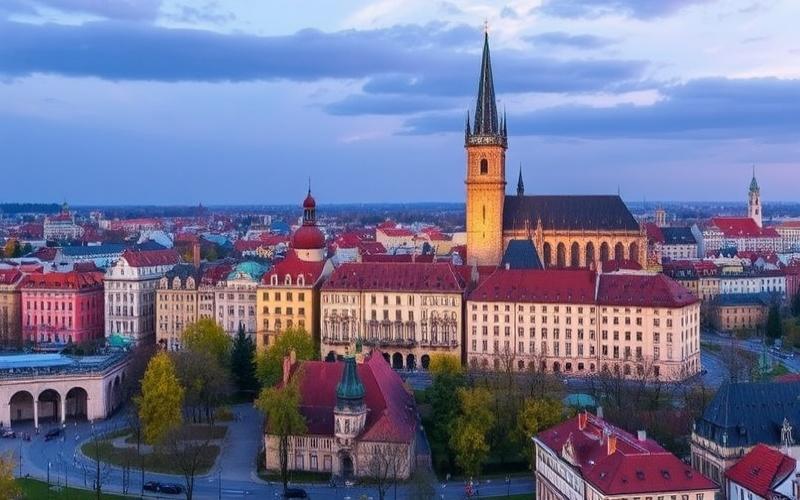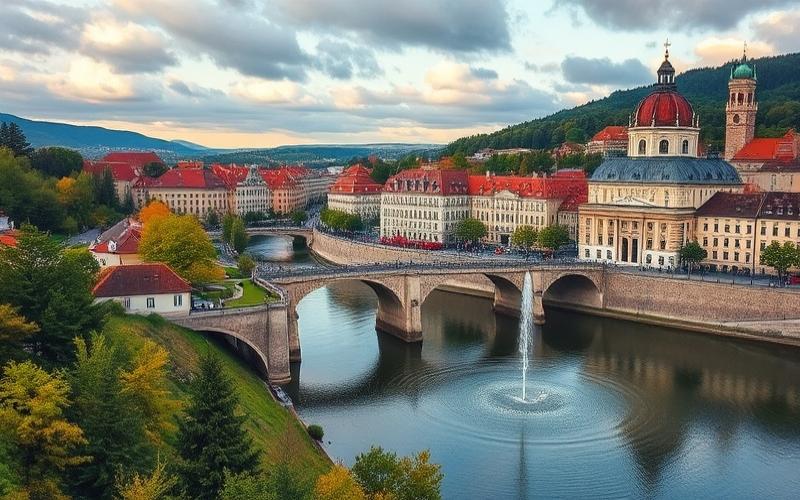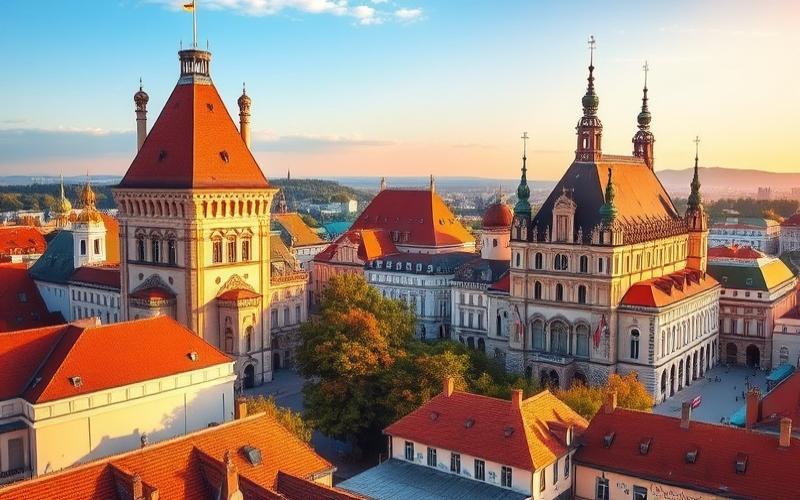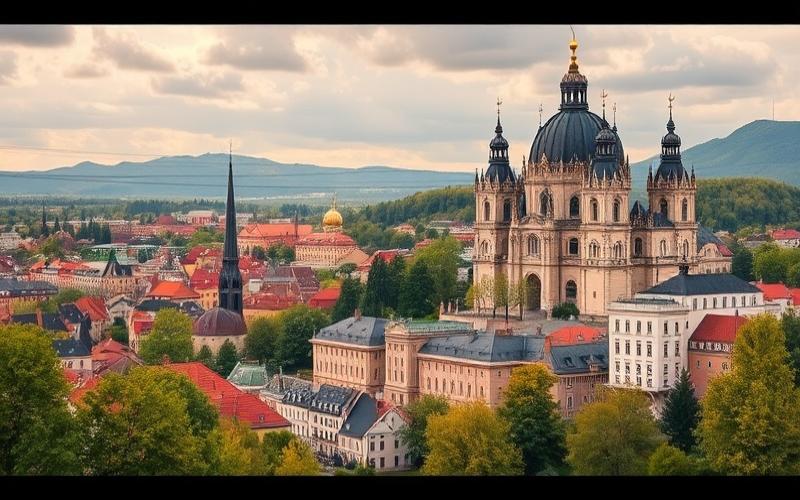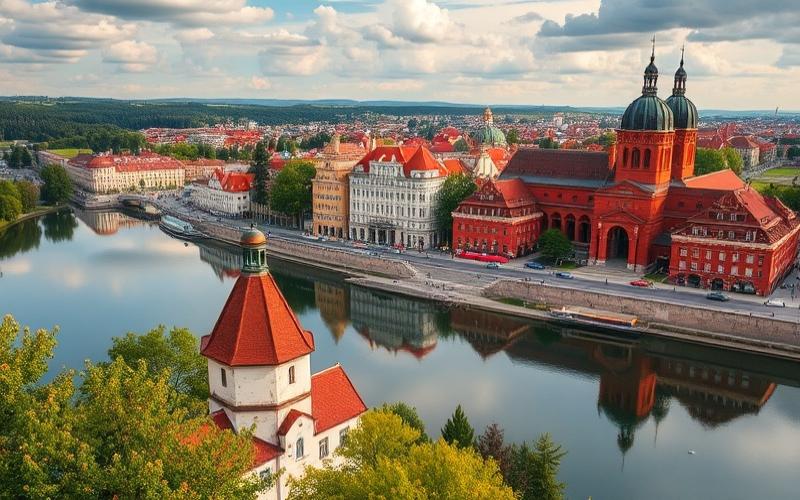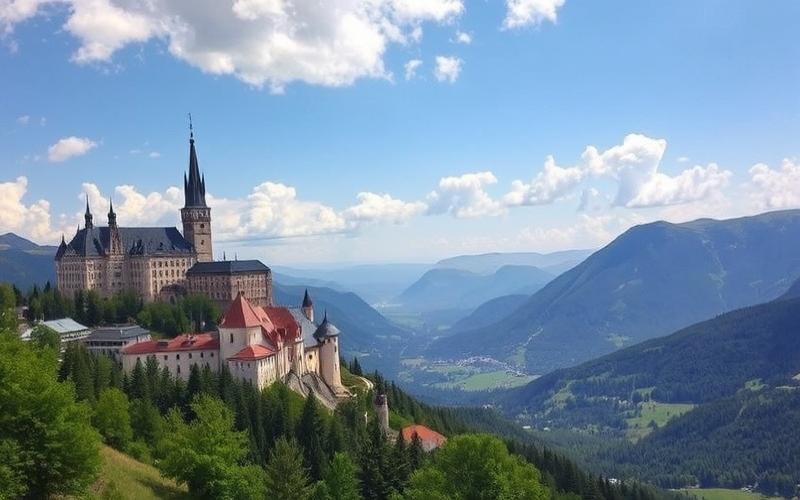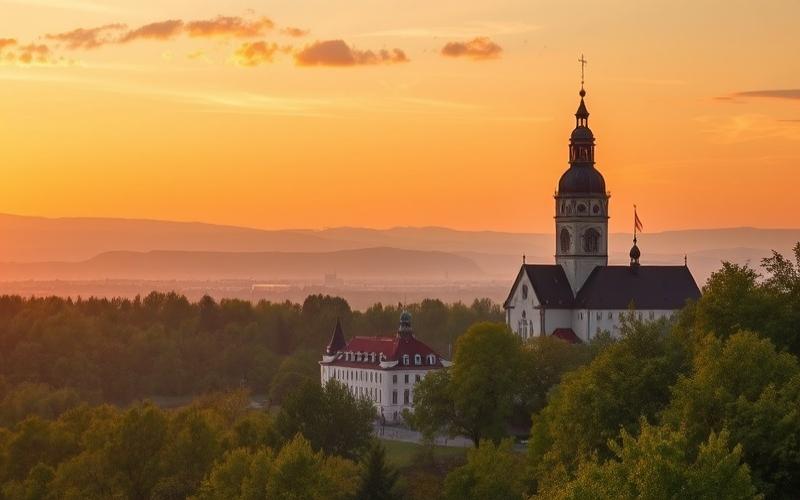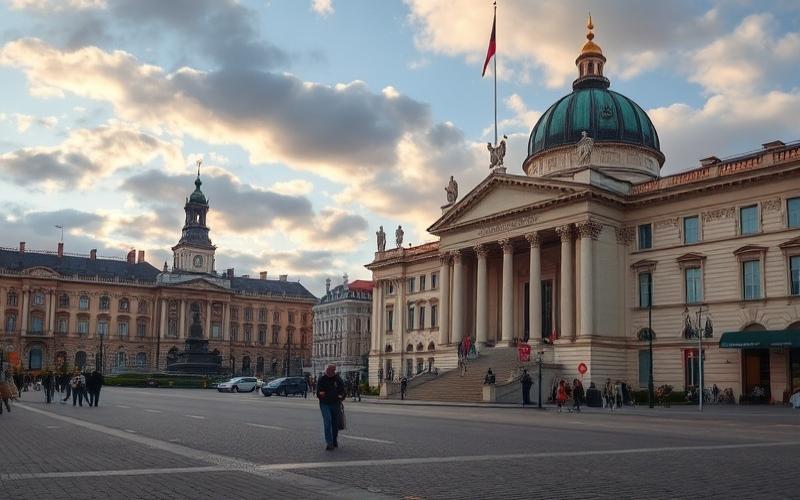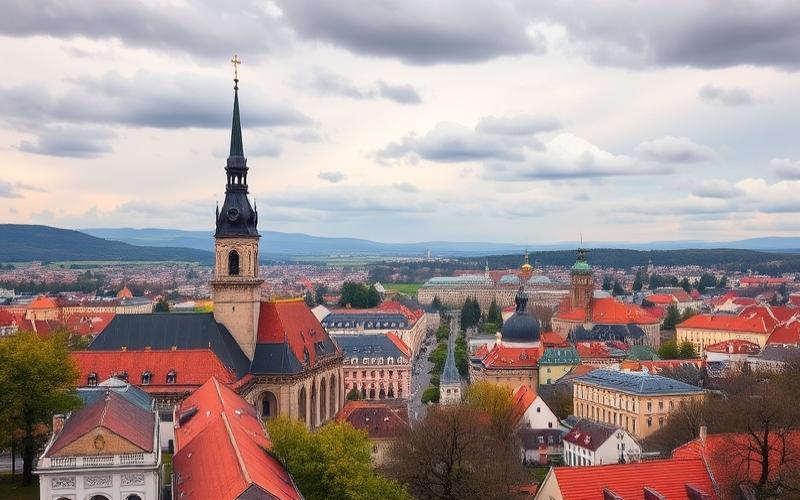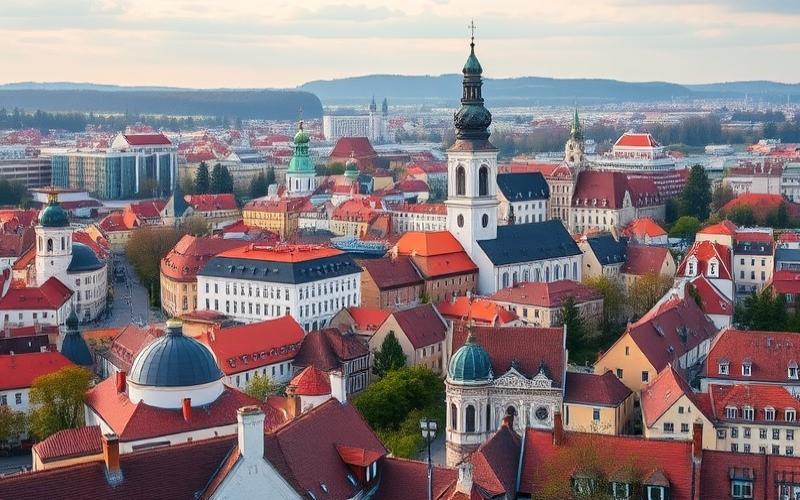
 Published on and written by Cyril Jarnias
Published on and written by Cyril Jarnias
Poland’s Real Estate Market: A Remarkable Dynamic
Poland’s real estate market is experiencing a remarkable dynamic, marked by developments that reflect the country’s profound economic and social transformations. In recent years, demand for residential properties has skyrocketed, largely due to rapid urbanization and increased disposable income.
Key Attractions for Investors
In this context, cities like Warsaw, Krakow, and Wrocław are positioning themselves as attractive hubs for both domestic and international investors.
The Trend Toward Sustainability
Adding to this is a growing trend toward sustainability, with an increasing number of projects focused on energy efficiency and environmental respect.
Good to Know:
Sustainable real estate projects often benefit from tax incentives and government subsidies in Poland.
Upcoming Challenges
However, economic uncertainties, particularly those related to interest rate fluctuations, could slow this rapid growth, while stricter regulations might gradually influence the market’s profile.
Trending Sectors in the Polish Real Estate Market
The regions in Poland currently showing strong real estate demand are primarily Warsaw, Krakow, and Wrocław. These cities stand out due to their economic growth, appeal to foreign investors, and rapid infrastructure development.
| City | Real Estate Demand | Average New Price (PLN/m²) | Annual Growth Rate | Main Assets |
| Warsaw | Very Strong | 16,383 | +3.1% | Capital city, strong rental demand, modern offices, infrastructure projects |
| Krakow | Strong | 15,686 | +6.6% | University hub, tourism, cultural dynamism |
| Wrocław | Strong | 14,257 | +11.1% | Tech city, student presence, international companies |
Particularly Sought-After Property Types:
- Co-working Spaces: Highly sought after in Warsaw and Wrocław, driven by the rise of remote work and the presence of startups and regional headquarters of multinational companies.
- Luxury Residences: Demand is growing in Warsaw and Krakow, linked to the influx of expatriate executives, diplomats, and international investors.
- Rental Housing: Studios and 2-bedroom apartments are popular in Warsaw and Krakow for the student market and young professionals, generating gross returns of 2% to 5% depending on the city.
Factors Influencing Popularity:
- Foreign Investments: Economic stability and attractive returns draw international capital, particularly from the EU.
- Infrastructure Development: Major urban transport projects (metro, trams) and business zones, especially in Warsaw, stimulate demand.
- Government Initiatives: Simplified taxation on rental income, no social security contributions, and ease of access for European residents encourage investment.
Emerging Trends:
- Sustainability: Growth in eco-friendly construction, integration of green spaces and low-carbon materials in new projects.
- New Technologies: Development of smart buildings (home automation, automated energy management), particularly in office spaces and high-end residences.
- Space Flexibility: Increase in mixed-use buildings combining housing, offices, and retail tailored to new urban lifestyles.
Key Takeaway:
The dynamism of the Polish market relies on the combination of a strong economic environment, sustained rental demand, and a favorable regulatory context, with growing attention to sustainability and innovation in construction.
Good to Know:
Warsaw, Krakow, and Wrocław are experiencing strong demand in the Polish real estate market, with a notable increase in foreign investments and government initiatives stimulating infrastructure development. Particularly sought-after properties include co-working spaces, driven by the growth of remote work, as well as luxury residences and rental housing catering to clients seeking comfort and security. Emerging trends, such as sustainability and the integration of new technologies in construction, are gaining importance, influenced by increased environmental awareness. These cities also benefit from a framework conducive to innovation, attracting startups and fostering the growth of the real estate sector in previously unexplored directions.
Price Evolution: An Overview of the Polish Market
The real estate price index in Poland reached a record 213.20 points in the first quarter of 2025, marking continuous growth since mid-2010. Year-over-year, the increase stood at 6.6% in early 2025 (compared to 10.4% in 2024), indicating a relative slowdown but still sustained momentum.
Factors Influencing These Trends:
- Economic:
- Persistent inflation over several years.
- Rise then gradual stabilization of interest rates starting late 2023.
- Polish GDP growth above European average until 2023.
- Low tax rates on rental income and no property wealth tax favoring rental investment.
- Political:
- Government programs supporting homeownership for young households (notably the “First Home” program).
- Urban planning favorable to residential development in some secondary cities to ease congestion in Warsaw and Krakow.
- Social:
- Strong urban demand linked to demographic dynamism in major cities (Warsaw, Krakow, Wrocław).
- Increased post-pandemic mobility toward larger homes or those located in suburban areas.
Summary Table of Median Prices Observed in June 2025:
| Location | Price/m² Apartments | Price/m² Houses |
|---|---|---|
| Warsaw | ~15,000 PLN | ~9,000 PLN |
| Krakow | ~13,500 PLN | ~8,500 PLN |
| Wrocław | ~12,000 PLN | ~7,000 PLN |
| Lower Silesia Voivodeship | 10,847–9,943 PLN | 5,023–5,092 PLN |
| Greater Poland | 11,282–11,739 PLN | – |
Projections for Coming Years:
Price growth is expected to moderate around +4%/year between 2026 and 2028, assuming contained inflation and prudent monetary policy.
Metropolitan regions will remain more dynamic than rural or secondary areas.
Impacts on First-Time Buyers and Investors:
- First-Time Buyers:
- Increasing difficulty accessing homeownership despite some public programs; price-to-income ratio reaches high levels (~9 years of average salary to buy a standard apartment).
- Investors:
- Attractive rental returns (often higher than in Western Europe), reinforced by favorable taxation but with recommended caution regarding potential risks from the prolonged upward cycle (possible “bubble”).
Influential Government Policies
Key measures include direct support for first-time buyers via subsidies or preferential loans, along with a relatively favorable tax environment for investments. However, debates exist around potential tax tightening if the rise persists too long or generates significant social tensions.
Brief Comparison with Rest of Europe:
- Poland: rapid but now slowing growth; market considered cheaper than France/Germany/Spain per average urban m²
- Germany/Netherlands/Sweden: mature markets showing stagnation or recent decline after post-COVID surge
- Spain/Portugal/Hungary/Czech Republic: confirmed rebound since pandemic end but increased volatility
Key Takeaway:
The Polish market remains dynamic thanks to its active urban demographics and solid economic fundamentals. However, it now shows some classic signs of maturity (gradual slowdown) while remaining attractive compared to the current European context.
Good to Know:
In recent years, the Polish real estate market has seen a marked price increase, particularly in cities like Warsaw, Krakow, and Wrocław, where nearly 10% annual growth has been observed since 2019. This trend is mainly attributed to strong demand fueled by urban migration and a growing economy. Politically, the country’s stability and tax incentives for first-time buyers have favored real estate investments. However, rising inflation and tightening lending conditions could slow this momentum. Compared to countries like Germany or the Czech Republic, the price structure remains competitive, although the gap is slowly narrowing. Projections indicate a slight moderation in prices but a still dynamic market, offering interesting investment opportunities for savvy buyers.
Investing in Poland: Which Property Type to Choose?
Popular Property Types in Poland
| Property Type | Typical Location | Current Trends (2025) |
| Downtown Apartments | Warsaw, Krakow, Wrocław | Strong demand, stable price increases |
| Suburban Houses | Outskirts of major cities | Sustained growth, family interest |
| Rural Properties | Countryside and small towns | Niche market, space or agricultural investment |
| Mixed-Use Developments | Emerging urban neighborhoods | Growing popularity among young professionals |
Main Advantages and Disadvantages
Downtown Apartments
- Advantages:
- High market liquidity
- Access to infrastructure (public transport, schools)
- Rental yields up to 9% annually in some major cities
- Disadvantages:
- High prices and rapid growth (+14% year-over-year by end of 2024)
- Competition among investors
- Often limited square footage
Suburban Houses
- Advantages:
- Larger living and outdoor spaces
- Good price/space compromise outside urban centers
- Appeal for families seeking tranquility without moving far from economic hubs
- Disadvantages:
- Increased dependence on personal vehicles
- Lower rental potential than downtown
Rural Properties
- Advantages:
- Lower acquisition prices compared to urban areas
- Potential for tourism or agricultural development (e.g., agritourism)
- Opportunities in undervalued regions like Łódź or Bydgoszcz
- Disadvantages:
- Limited demand; harder resale outside exceptional periods
- Less served by modern infrastructure
Impact of Geographic Areas & Infrastructure Development
Metropolises like Warsaw, Krakow, and Wrocław remain market drivers due to their economic appeal. However, improvements in highway and rail networks are also stimulating demand in urban peripheries and some undervalued secondary cities. Investors should monitor public transport developments: a new railway or tram line can quickly increase a neighborhood’s value.
The rise of remote work also contributes to growing interest in suburban houses with gardens.
Key Tips for Foreign Investors
- Check your status: EU citizens benefit from simplified conditions for purchasing any type of residential property.
- For non-EU residents: Apartment purchases are generally free; purchasing a single-family home may require ministerial authorization.
- Prepare to provide strong banking documentation if seeking a local mortgage.
- Consider new environmental obligations: since August 2014, an energy certificate is required for all real estate transactions.
- Prioritize properties with existing eco-certification (higher future value).
Future Demand Evolution Perspectives
Key Takeaway
The strong trend is toward maintaining or even strengthening prices in all major Polish urban areas—supported by continuous urban population growth and the gradual return of young Polish expatriates.
Suburban houses should continue to attract local families thanks to policies favoring first-time homeownership and tax incentives for sustainable development.
The rural segment will remain primarily oriented toward specific clientele: alternative tourism projects or modern agriculture.
Mixed-use developments integrating housing/commerce/leisure are expected to multiply around major economic hubs, meeting growing expectations for modern urban quality.
Practical Checklist – Key Points Before Investing:
- Verify access to recent transport/infrastructure
- Prioritize neighborhoods with demographic dynamism
- Anticipate regulatory requirements (ecology/certification)
- Monitor government policies on affordable housing
Investing today therefore requires a nuanced approach according to each geographic segment—but still offers significant potential if these parameters are considered
Good to Know:
In Poland, downtown apartments attract many investors due to strong rental demand and accessibility to infrastructure like public transport and services, although prices are high there. Conversely, suburban houses, more affordable and offering more space, appeal to those seeking a family-friendly environment but may be affected by distance from urban centers. Rural properties are gaining popularity due to their tranquility and potential for agricultural projects, however, they present the challenge of limited access to urban services. Areas benefiting from infrastructure developments, such as highways or fast train lines, see their attractiveness increase. Foreign investors should be aware of local regulations, often requiring permits to acquire property, and should monitor demographic trends, such as increasing urbanization, to anticipate demand evolution.
Disclaimer: The information provided on this website is for informational purposes only and does not constitute financial, legal, or professional advice. We encourage you to consult qualified experts before making any investment, real estate, or expatriation decisions. Although we strive to maintain up-to-date and accurate information, we do not guarantee the completeness, accuracy, or timeliness of the proposed content. As investment and expatriation involve risks, we disclaim any liability for potential losses or damages arising from the use of this site. Your use of this site confirms your acceptance of these terms and your understanding of the associated risks.

